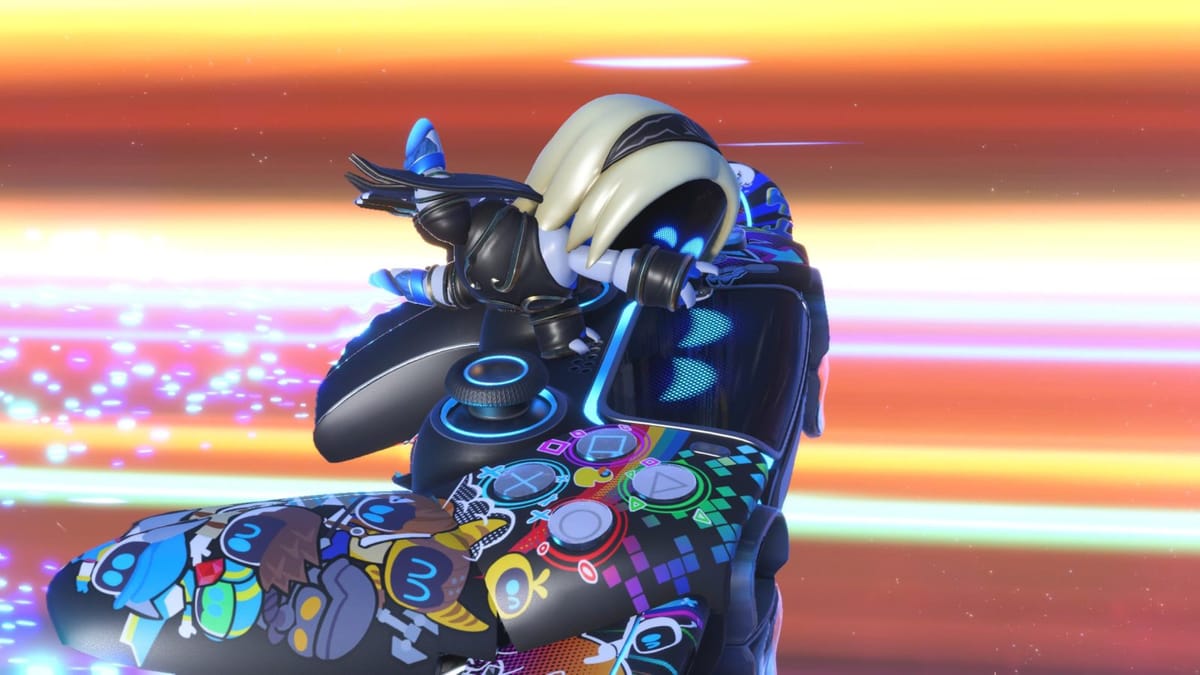
Jack:
Astro Bot aims to please. Its graphical coating shines with an impressive, inviting sheen. When you say it’s time to play, it practically assaults you with joy. It constantly fetches references to Playstation’s history and brings them to your door. Every moment of Astro Bot drips with charm and playfulness. Or perhaps saliva? At some point it dawned on me: Astro Bot is a puppy. One you can rely on to keep you company and talk to about Alundra. Sometimes Astro Bot can be messy, but when you get down to it, most complaints come with the territory of owning a puppy.
I like puppies. That makes talking about Astro Bot difficult. The appeal of both Astro Bot and puppies seems obvious. Just look at them! At the same time, taking puppies to task with a critical eye doesn’t feel right. No one wants to kick a puppy. Hopefully. Astro Bot places me in a precarious situation where I need to explain both its strengths and weaknesses, so bear with me. For the sake of video game discourse, I will kick as many puppies as I need to, and I will do it for you.
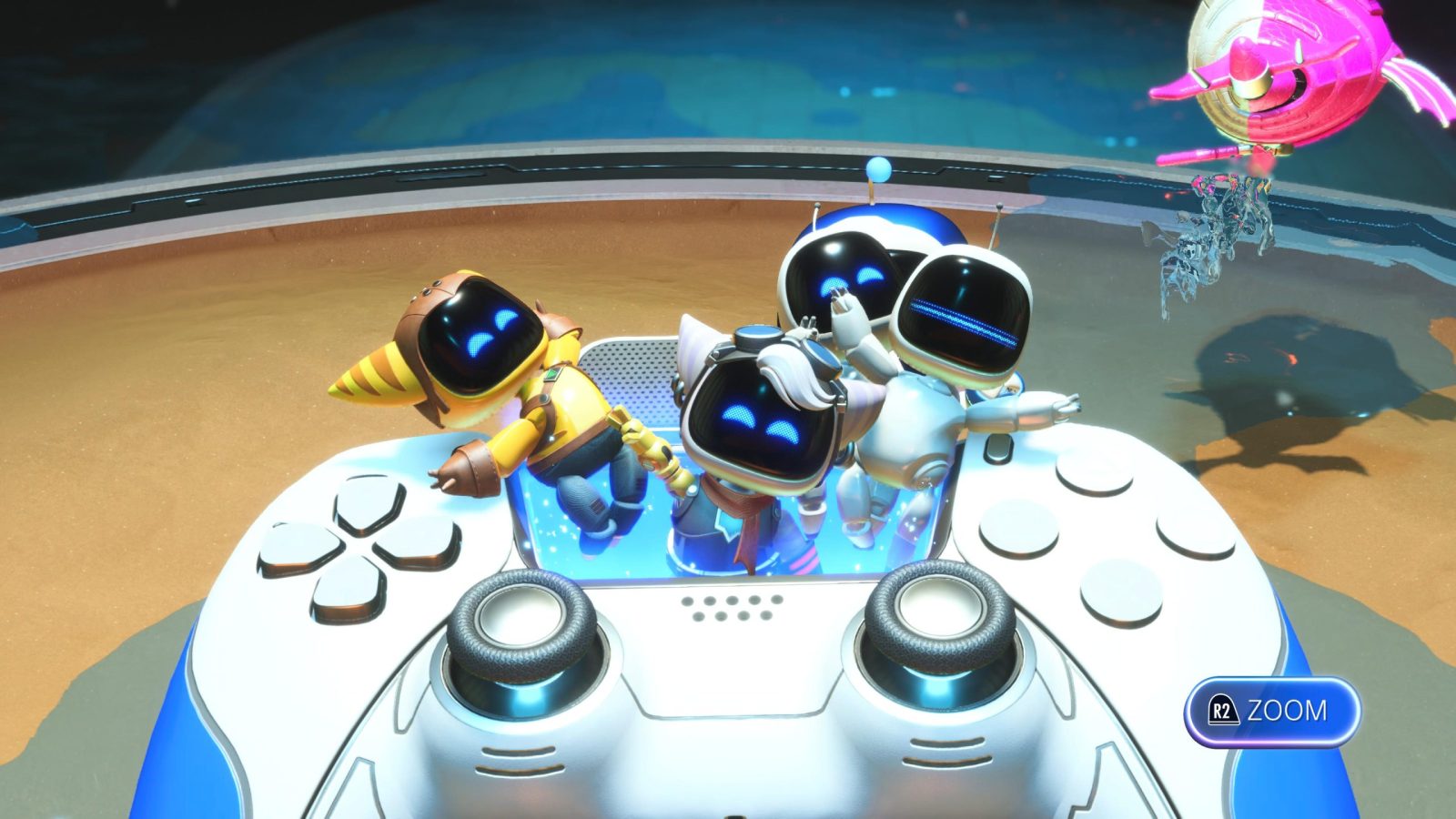
As anyone interested in Astro Bot should know, this game picks up from where 2020’s Astro’s Playroom left off. Astro’s Playroom comes free with the PS5, so play it – not just because it’s an excellent game, but because it will give you an idea of what to expect here. The main character Astro (who is a bot) controls identically between games. Astro runs, jumps, laser jumps, and smacks its way through 3D environments that test its platforming and exploration skills for the purposes of action and/or adventure. Even if you haven’t touched Playroom, just about any degree of gaming knowledge will allow you to discern what Astro Bot is all about.
Despite working off a familiar base, however, Astro Bot avoids feeling like something you’ve played before. It sets itself apart from other platformers with its strong, creative design sense and willingness to use every tool at its disposal to immerse you into the game. Astro Bot differs from Playroom primarily in two areas: focus and scope. These two areas allow Astro Bot to expand into a game that builds upon its predecessor without simply retreading it.
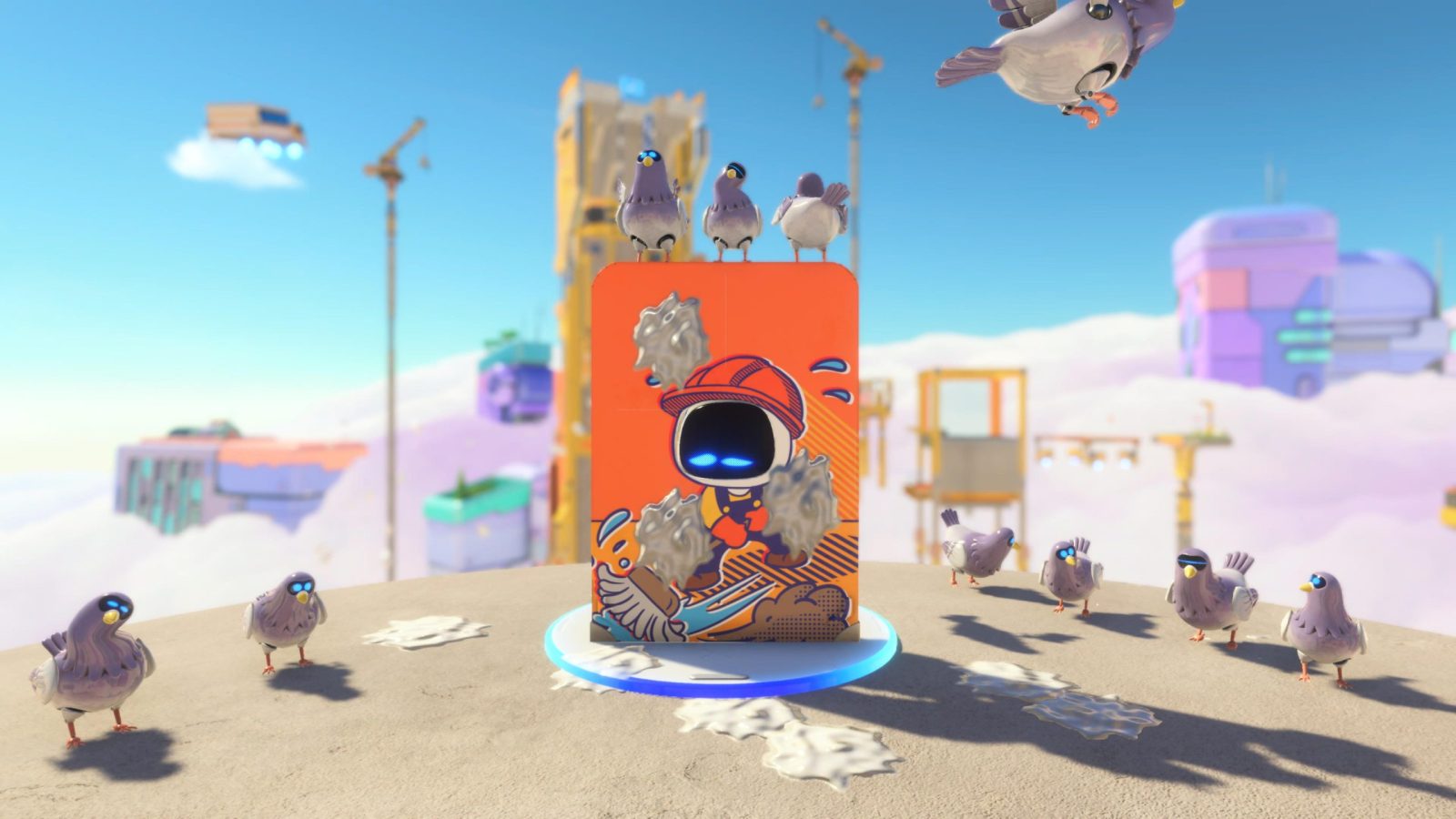
When it comes to focus, comparing the level design of Astro Bot to Playroom says it all. Playroom’s level design often promoted a relaxed pace with many wide open areas; running around felt like exploring a museum, which the game leaned into by placing its gaming cameos around levels like art pieces to admire. While Astro Bot contains areas and cameos that resemble Playroom’s approach, it largely keeps the leisurely admiration to the main hub world of the game. The levels themselves instead emphasize smaller areas that more noticeably push the player forward to the end of the stage, transforming the game into one more clearly focused on platforming challenges and defeating enemies.
Room for exploration still exists. Frequent paths will branch off to side areas, hiding plenty of hidden collectibles. Sniffing out all of Astro Bot’s secrets frequently gives you a reason to revisit stages. Astro Bot’s secret placement can get esoteric, leading to some thorough shakedowns of each area. Even when you don’t find exactly what you were looking for, the game will frequently reward you with coins for checking every nook and cranny. When you’re ready to give up the search, you can bring in some hired help after you’ve cleared a stage to point you in the right direction. Word of warning, the help comes at a price: the satisfaction of finding it yourself, plus a 200 coin tip.
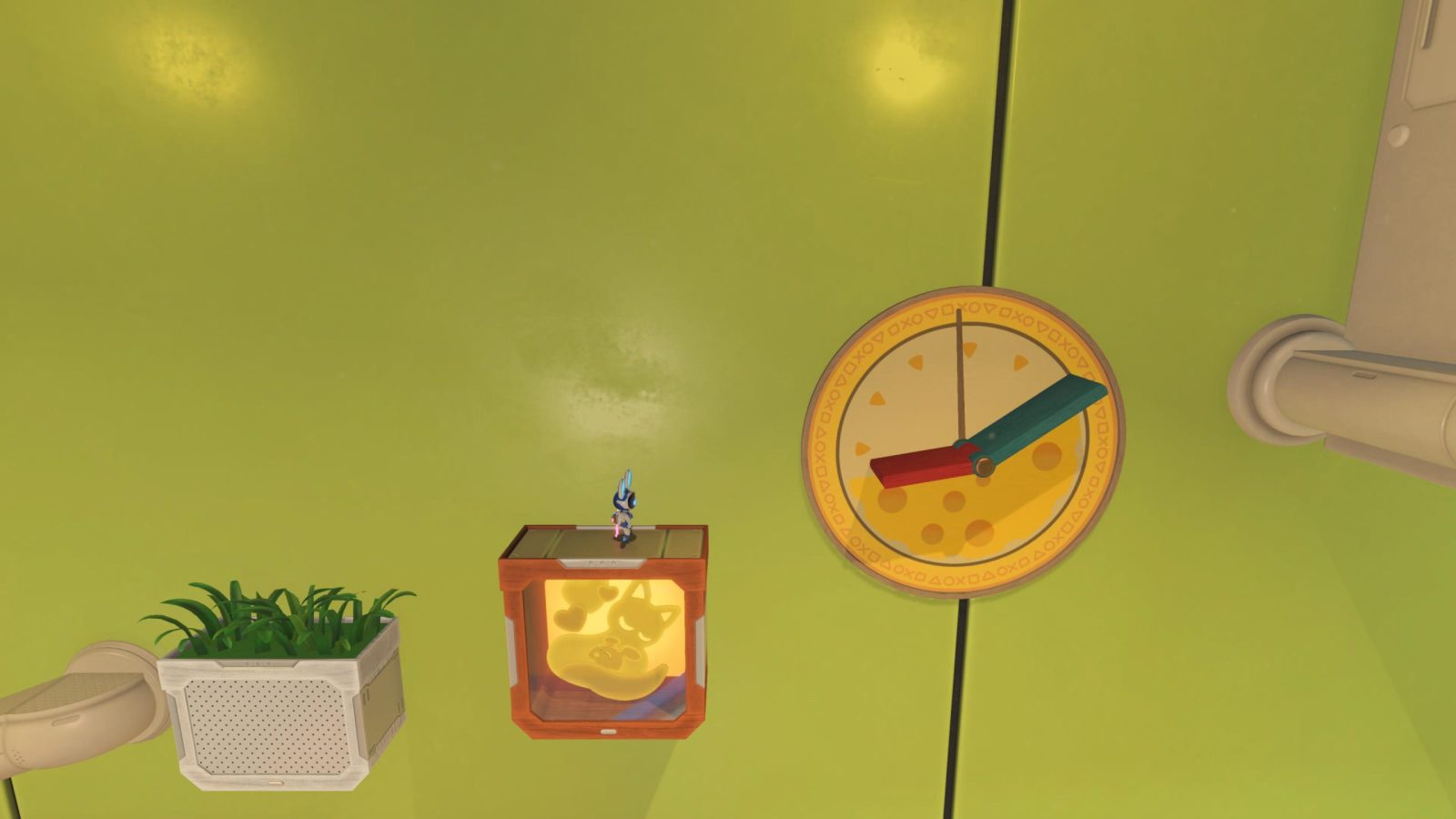
Finding secrets proves to be the most challenging part of Astro Bot. Given the shift in level design focus this shouldn’t be, but there’s no getting around it: this dog lacks bite. Any player with prior platforming experience will likely clear Astro Bot’s main path without breaking a sweat. None of the optional challenges put up much more of a fight, either. Even the final post-game level, the so-called “Grandmaster” challenge, took me a grand total of two attempts to complete.
Obviously skill levels differ between players and I’m probably better at these kinds of games than most. Still, I couldn’t shake the feeling that Astro Bot has a severely muted sense of challenge. Accommodating newer players shouldn’t come at the cost of any difficulty whatsoever. Few tasks will take you more than a handful of tries, and failing will only send you back seconds of progress. Astro Bot lacks the sense of tension and skill development that platformers typically excel at, which hurts its longevity. It desperately needs some teeth.
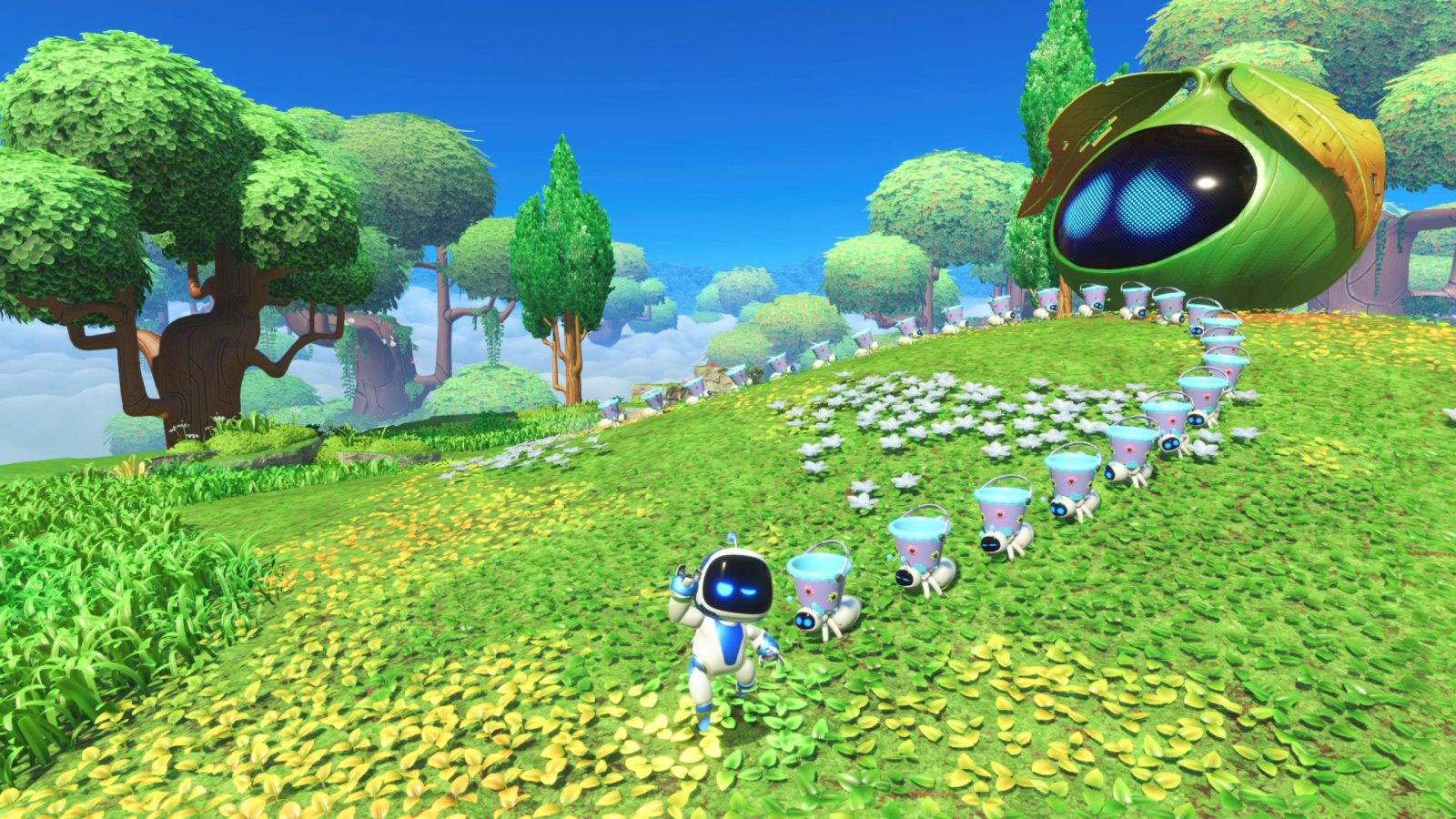
In Playroom, the teeth came from its speedrunning challenges. I expect that a similar mode will show up in Astro Bot sooner rather than later in an update. Right now, though, nothing exists to encourage players to further master or even just play the game after grabbing all of the collectibles. Sure I don’t technically need a mode to speedrun, but it helps to have the framework built into the game. Competing against my friends’ scores kept me playing Playroom long past the point of sanity.
I partly wonder if Astro Bot’s hesitance to push its players comes from how it’s designed. While the game controls smoothly, it does not control precisely. Bits of automation common in most modern games can be found in subtle ways throughout Astro Bot. Enemy hitboxes will suck you in from further than you expect, or Astro will lock onto targets automatically when throwing projectiles. Context sensitive actions need to make assumptions about what you want to do and when, which can be a problem when multiple different actions are assigned to the same button. Simple things like attacking or pulling objects both result from pressing the square button, but when the game groups enemies that require these separate actions together, mistakes are inevitable.
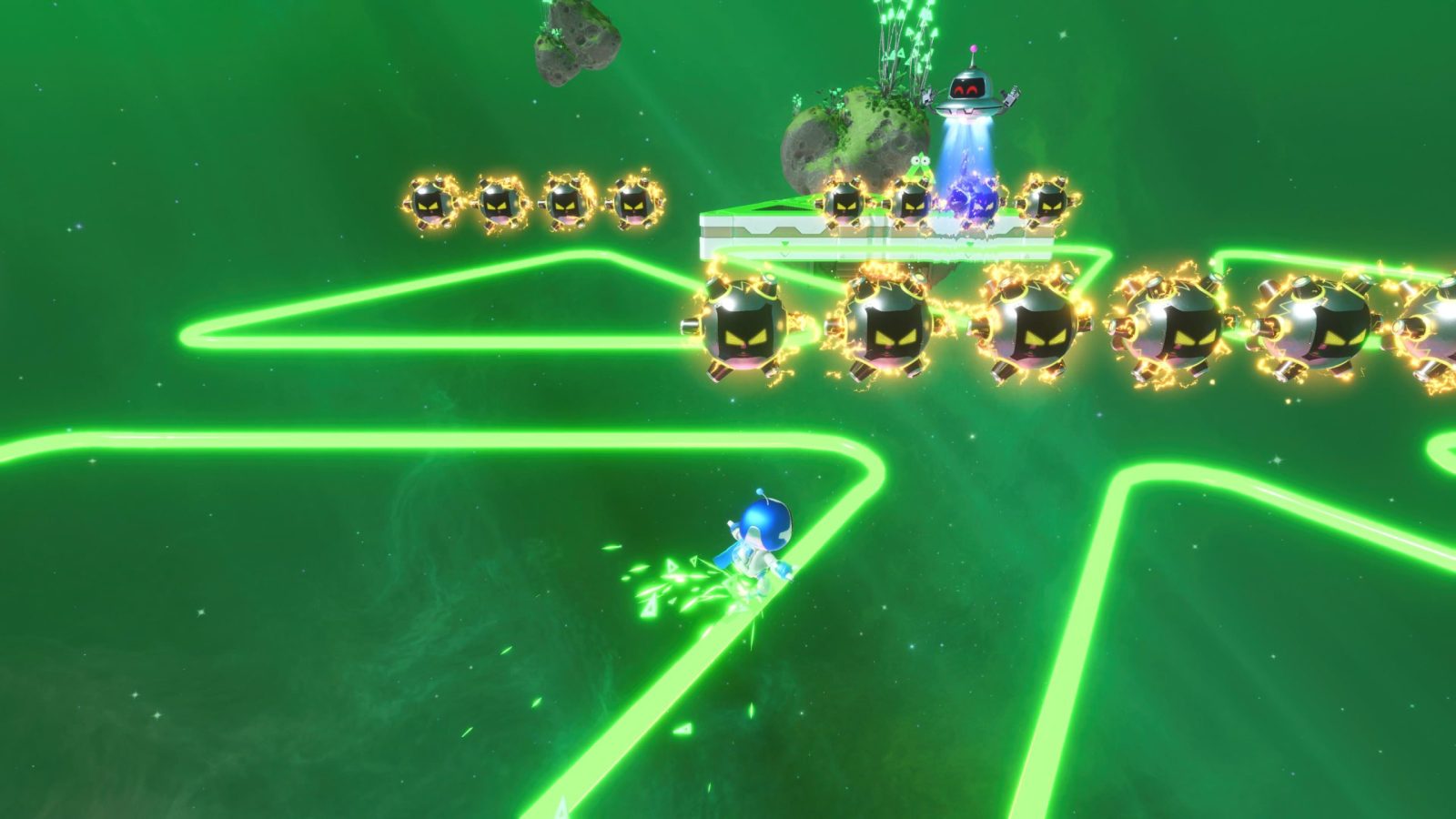
The messiness in Astro Bot’s game mechanics matters less to the game it currently is than it does the game it could be. When speedrunning, it can be annoying to lose a run for reasons outside your discernable control. However, the problem runs deeper than that. A more reliable, precise game gives players confidence in their actions, which in turn will give developers more confidence in crafting challenges to humble those players.
As is, Astro Bot functions more on the “good enough” level than a truly confident one. In a game where dying doesn’t matter and most challenges are a breeze, that type of design works okay enough. Unfortunately, it hinders the game from ever having ambitions deeper than that. I find it frustrating because so much of Astro’s movement otherwise feels solid on a basic level. I want some truly challenging level design from Astro Bot’s framework, yet at the same time I’m wary of what that would look like.
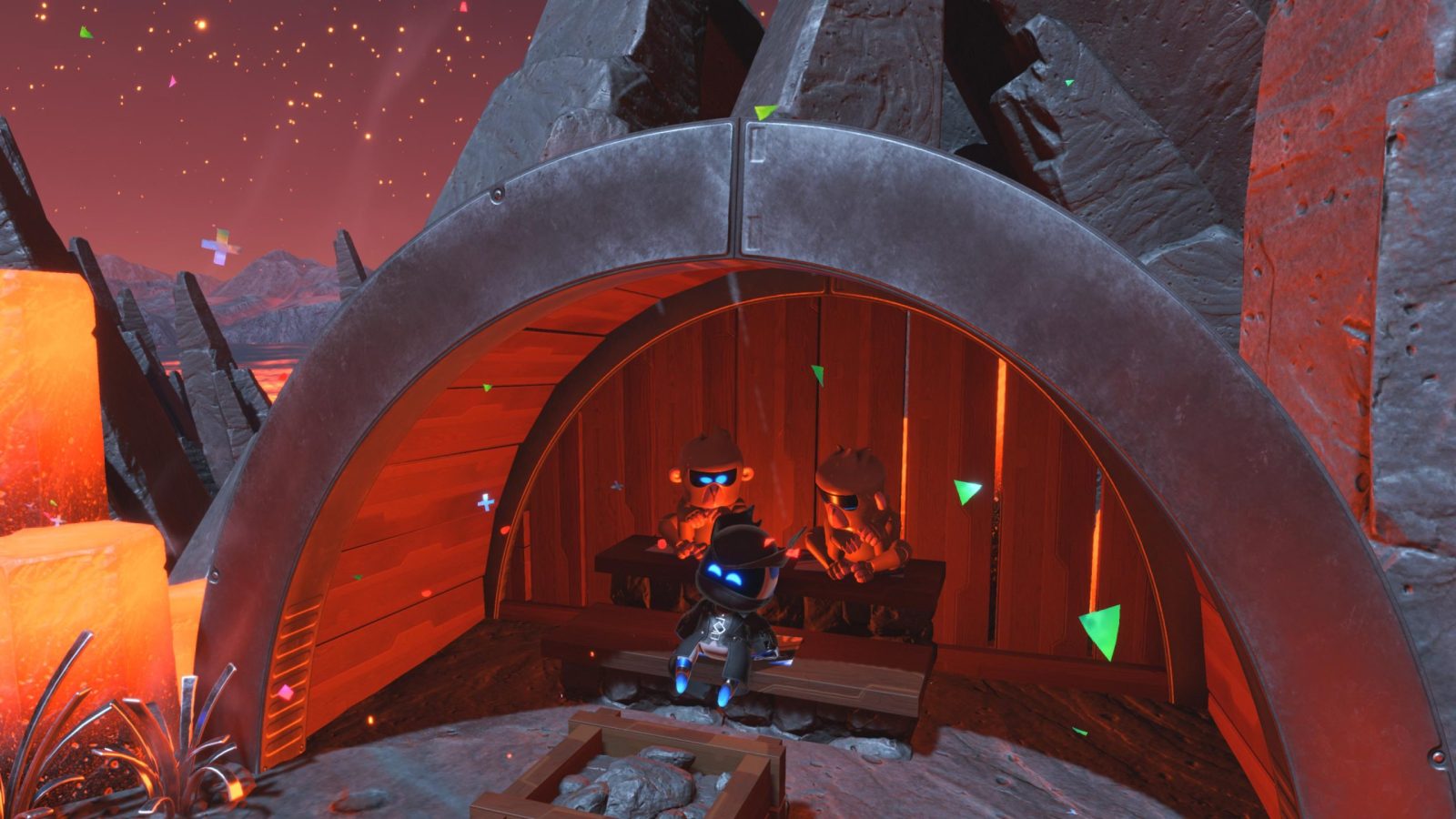
Instead of testing its player’s limits, Astro Bot relies more on the fun of the spectacle. Level after level blasts out ideas without leaving much room to breathe. And frankly, who needs oxygen when you have frog arms? Astro frequently uncovers power ups that further evolve the gameplay. From frog arms used to beat down bad guys to rocket-powered dogs, something new and fun always lurks behind the next corner.
The PS5’s DualSense controller brings the power ups, and the game as a whole, to life. While the depth of a game mechanic matters, there is also something to be said about the power of making a game satisfying to interact with on a base level. The way the rumble, sound, and physical feedback of the controller help convey the actions you take on the screen shouldn’t be understated. From walking on different surfaces to being caught in the middle of a crazy boss battle, Astro Bot dunks you headfirst into whatever’s going on at any given moment. This stuff worked well in Playroom and it’s depressing to think that Astro Bot may be the only game that rises to the same level since.
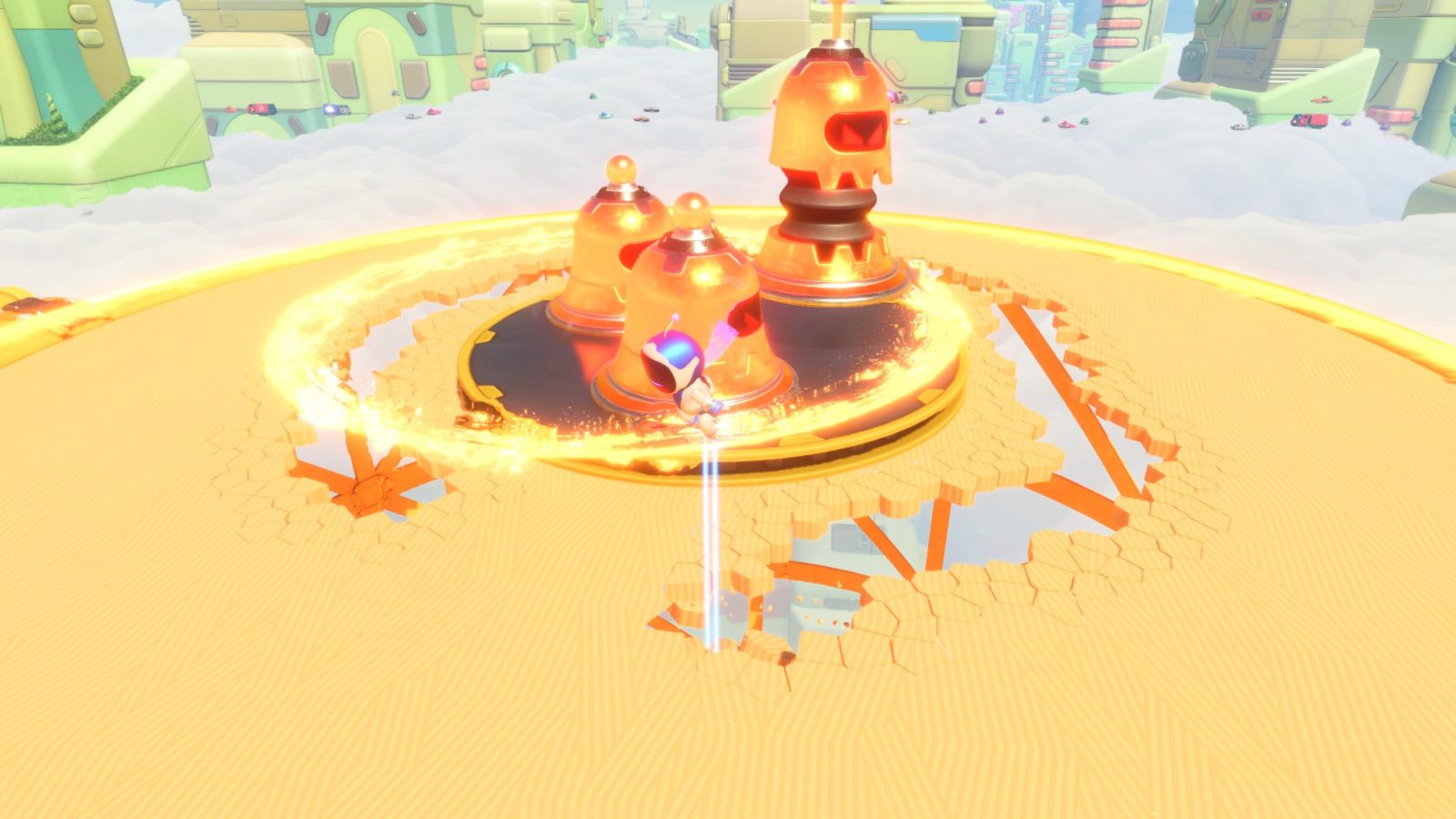
Although few games take advantage of the DualSense, at least there is now a lot more Astro Bot that does. Astro Bot is a much bigger game than its predecessor, with far more levels and Playstation cameos to uncover. Don’t confuse that for meaning that Astro Bot is a long game, of course – I finished it over a weekend and I’m sure you can too. I think that’s the right length for a platformer. Astro Bot packs in more than enough fun ideas to be satisfying without wearing out its welcome.
Actual gameplay is all well and good, but an equally important part of Astro Bot’s appeal comes from its integration of gaming history. Hundreds of bots assume the guise of classic video game characters, both overwhelmingly popular and obscure. Everyone expects to see Kratos in something like this, so it’s nice to see the developers dig deeper into some of the classics both old and new.
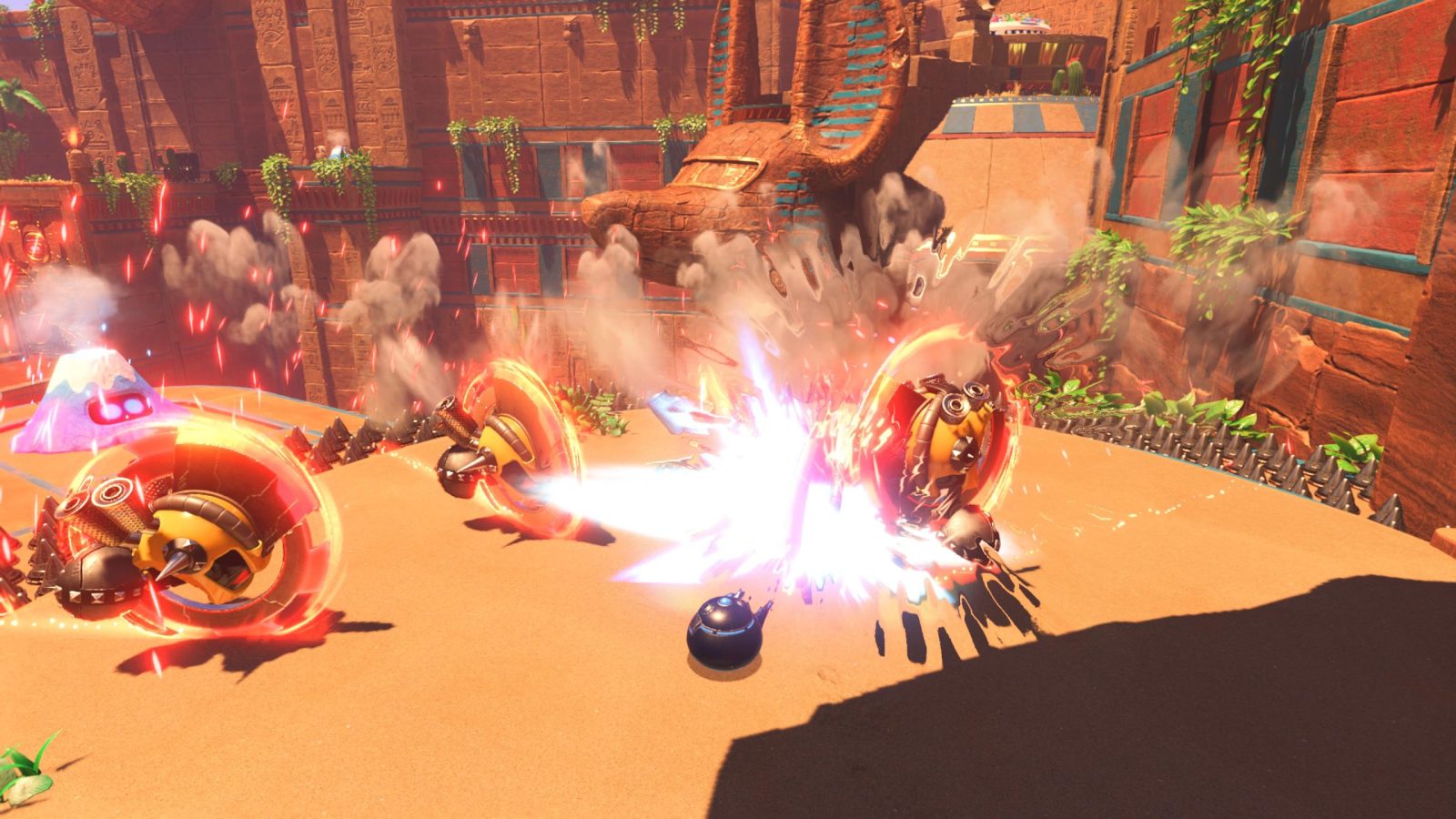
For the most part, the cameos function more as set dressing than a genuine part of the game. They exist to attract people to Astro Bot on a superficial level and discover a game they may not have otherwise played. I prefer this approach – as much as I enjoy seeing cool games get some acknowledgement, I also want Astro Bot to be firmly its own thing. Some exceptions do apply, as select levels allow Astro to adopt the form of a particular character. Taking on another bot’s form translates the character’s “home” gameplay stylings directly into the Astro Bot framework. These levels are awesome – a clear highlight.
I’m happy that the cameos exist and that they are so tastefully balanced. Astro Bot doesn’t need them, but I do believe it’s a stronger title with them. There’s a thrill in entering a level and wondering who you’ll find. That said, allow me to briefly whine about who you won’t find: Mega Man. Seriously, you picked Ghosts ‘N Goblins over Mega Man!? Huh??? Bad dog.

No matter what mistakes it makes, however, Astro Bot remains lovable. I can forgive a lot as long as your heart is in the right place and you reference Legacy of Kain. At some point, when it fully grows its teeth and learns to control itself a little better, I can see this series producing an all-time platforming classic. Right now, though, Astro Bot still manages to be a fun and energetic little scamp.
David:
Astro Bot is a delightful experience. It’s constantly trying to wow you, with new surprises not just around every corner but every few seconds. In the seven or so hours it took to beat every level, collect every bot, and empty out the gacha machine I had a smile on my face the entire time. It is a breezy experience, lacking much challenge even in the secret stages, but even after getting the platinum trophy I want to dive back in and do it all again.
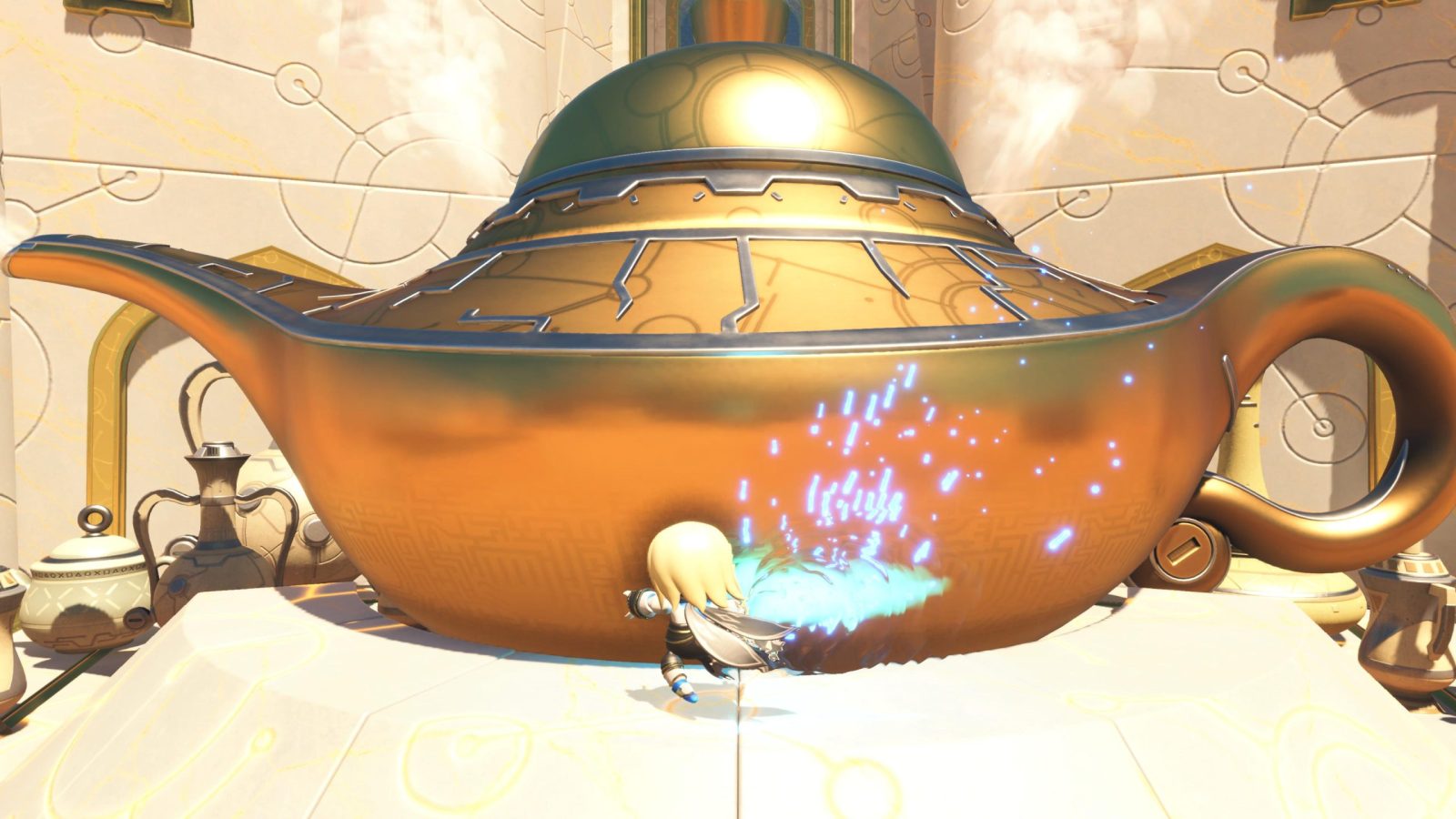
Again, if you’ve played Astro’s Playroom or Rescue Mission (which you should have), the basics will feel familiar to you. In fact, the only difference I noticed in how Astro controls is that his spin punch charges up faster here than in Playroom. The basic platforming feels good, but is brought to new heights through some absolutely masterful level design. The game will introduce a new mechanic to you in a safe space, slowly up the challenge as the stage progresses, and turn the mechanic on its head by the end.
Some mechanics are explored even further in later levels, while some only get their time in the sun a single time. Most power ups Astro can find show up multiple times, like the Frog Boxing Gloves or the Jetpack Dog, while my favorite of the power ups, the Shrinking Mouse, only featured in a single level. As Jack mentioned, there is also a special level in each world allowing Astro to take on the form and abilities of a cameo bot. These levels are fairly lengthy and always a treat, but left me wanting more. That’s not a criticism in this case, it’s all just so fun I never wanted it to end.

With Astro Bot’s focus on cameo characters, I was a bit worried the game would get lost in drowning the player in references. A lot of references in media go only as deep as “remember the thing” and expecting that to be enough. While Astro Bot did get me more than a few times in that aspect, with the likes of Gravity Rush’s Kat, Dark Cloud’s Max, a ton of Ape Escape love, and more appearing in adorable bot form, it does more with these references while still leaving them in the background where they belong. The aforementioned Gacha machine allows you to spend coins to randomly unlock props for the cameo bots to play with. These give them some cute animations in the Crash Site hub level, like Sly hiding in a safe or the boy from Boku no Natsuyasumi getting a bug net and cage. It’s adorable, but not the whole point of the adventure.
There’s quite a lot to do in the Crash Site, with more things unlocking as you find bots and collect puzzle pieces. Astro might need a hand or a hundred to cross a gap, so you can call over all the bots you’ve found so far to form a bridge, letting you rescue another bot on the other side. These are nice rewards for finding as many bots as you can, giving you rewards or mini platforming challenges.
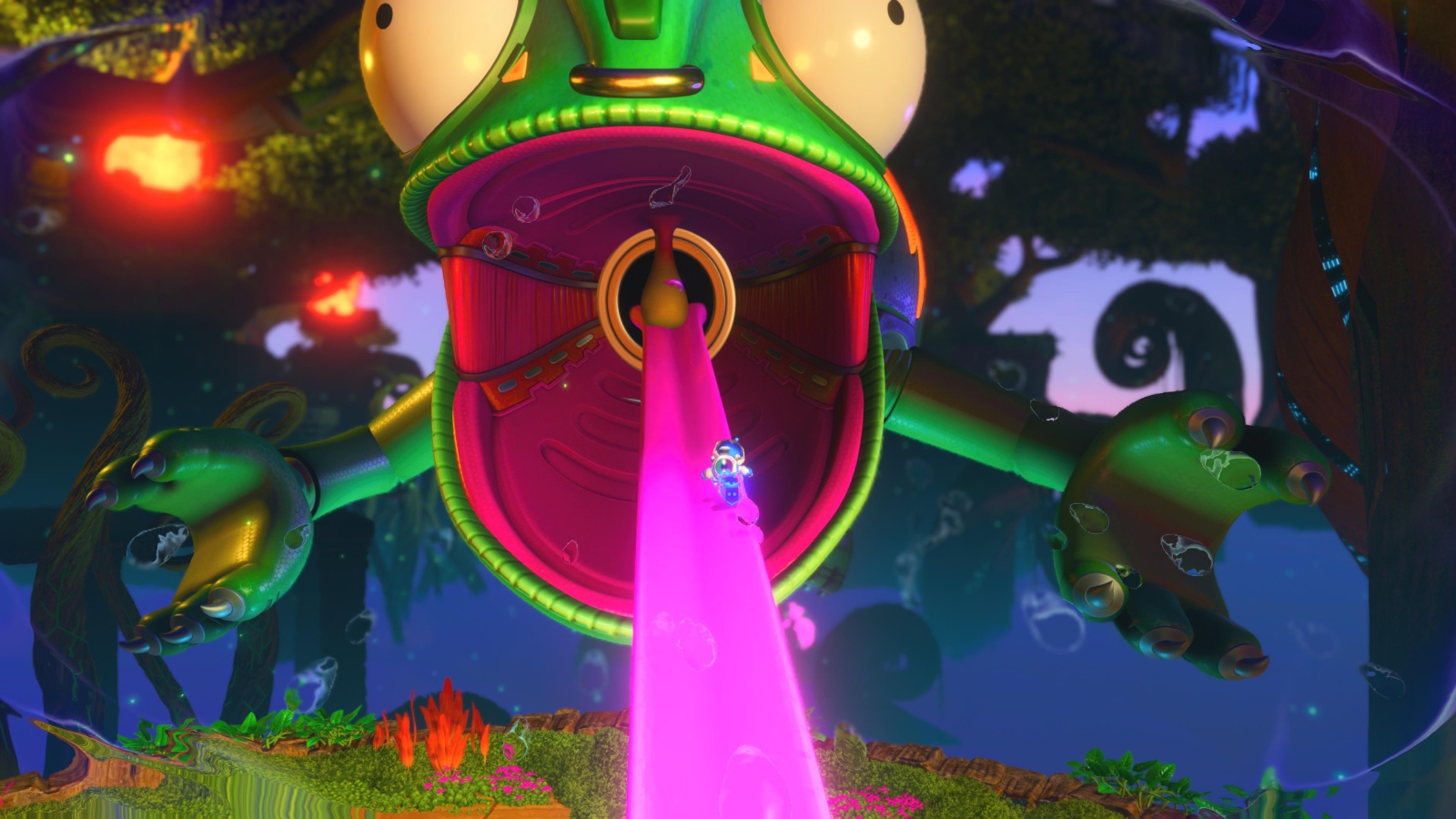
Collecting a certain number of puzzle pieces will fill out one of a few jigsaw puzzles in the Crash Site. Once complete, these unlock the Gacha machine, the ability to paint Astro’s Dual Sense ship, outfits to wear, the game’s photo mode, and more. It’s nice to feel rewarded for collecting everything while not hampering progression if a player just wants to blast through the critical path.
The main levels on that path are a lot of fun, but there’s even more to discover if you explore each stage and the overworld map. Some levels have deviously hidden secret exits, and uncovering them is a delight each time. These exits usually involve extrapolating on a level’s gimmick just a bit further than the level proper does. More often than not when I asked myself if doing something out of the box would work it did and I was greatly rewarded. Even if there weren’t hidden collectables, there was at least a cute animation or visual gag to delight you.
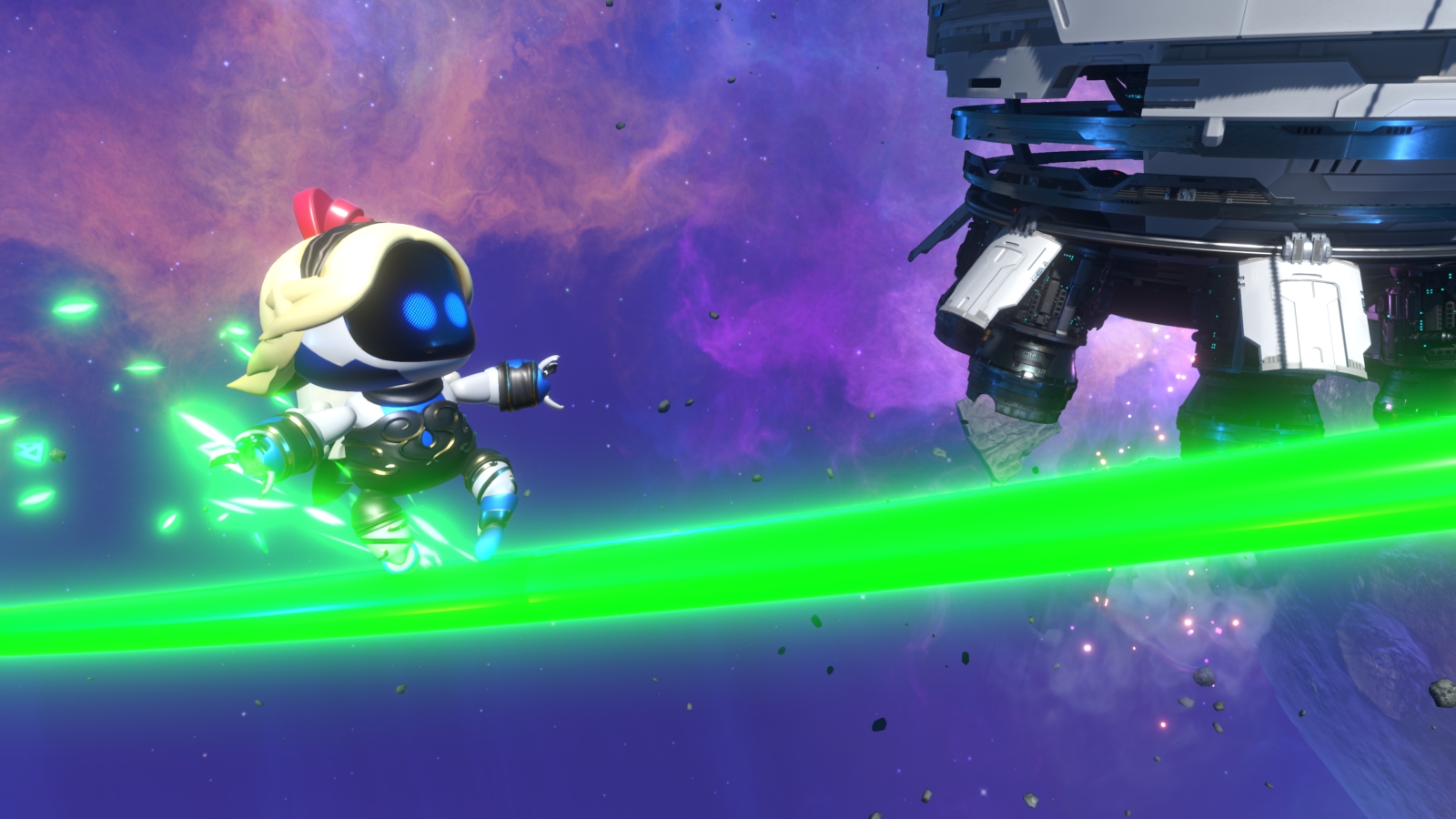
I keep coming back to that word, delightful, because that’s the perfect way to describe Astro Bot as a whole. It’s cute, creative, and a joy from start to finish. While PlayStation in general has been focused on cinematic experiences that are beginning to blend together, Astro Bot is a breath of fresh air.
Astro Bot
Excellent
Astro Bot captures all of the strong points of a brand new puppy. It’s cute, playful, and doggedly loyal to PlayStation’s history. While it still has room to grow into its legs and sharpen its teeth, most missteps are easily forgiven. I mean, just look at it!
Pros
- Charming presentation
- Creative levels and power-ups
- Knows what Alundra is
Cons
- Challenge lacks teeth
- Automation hinders gameplay potential
